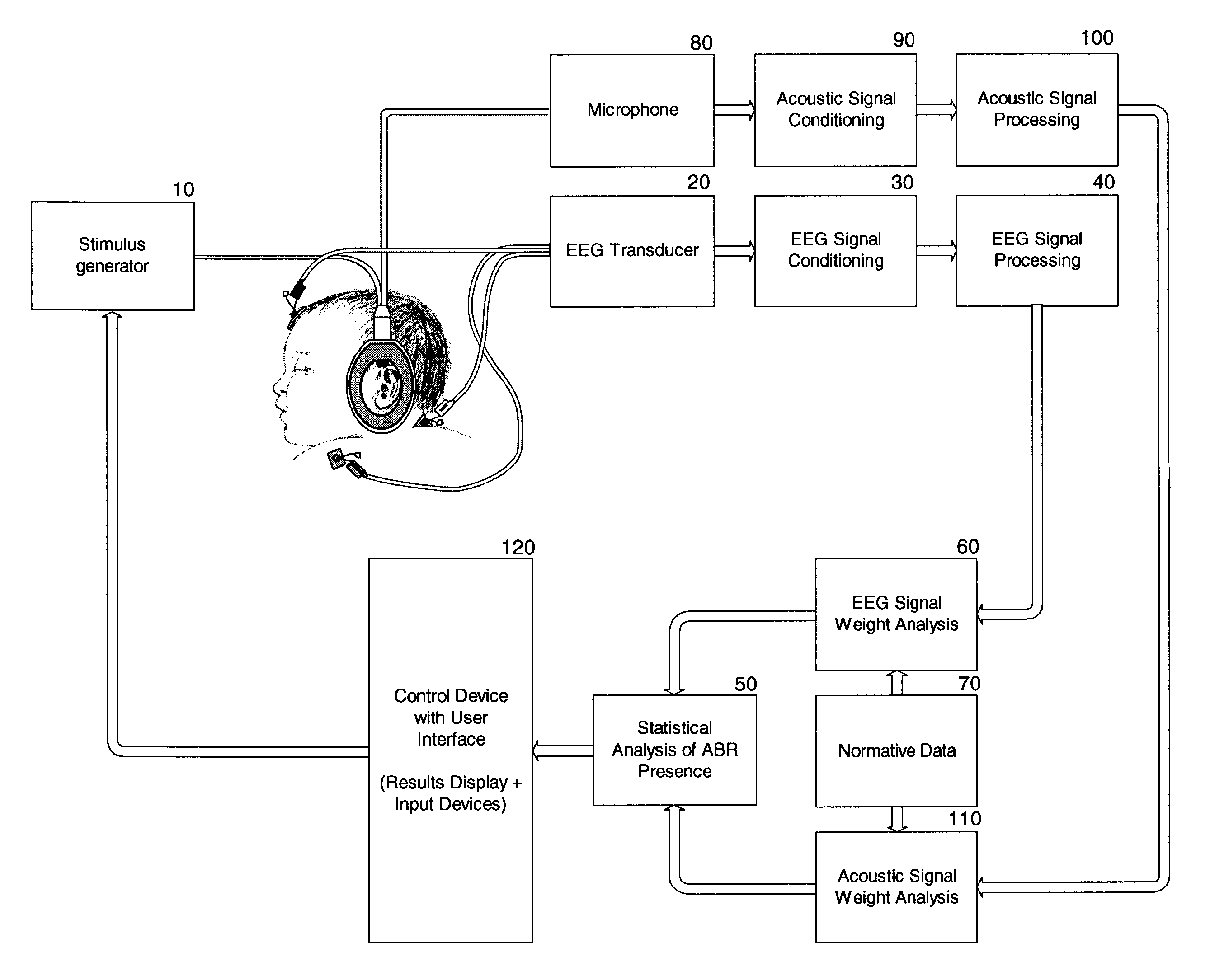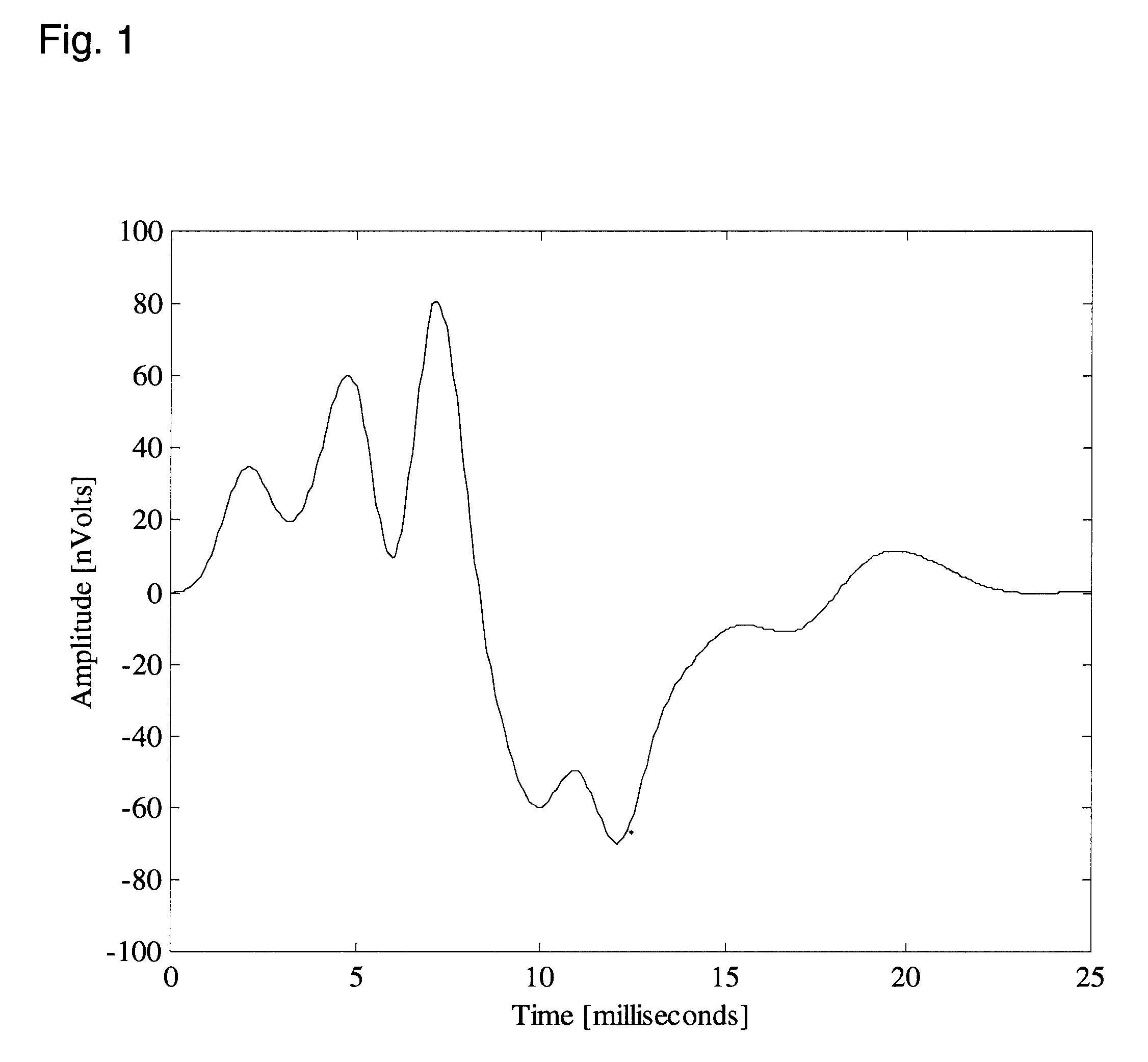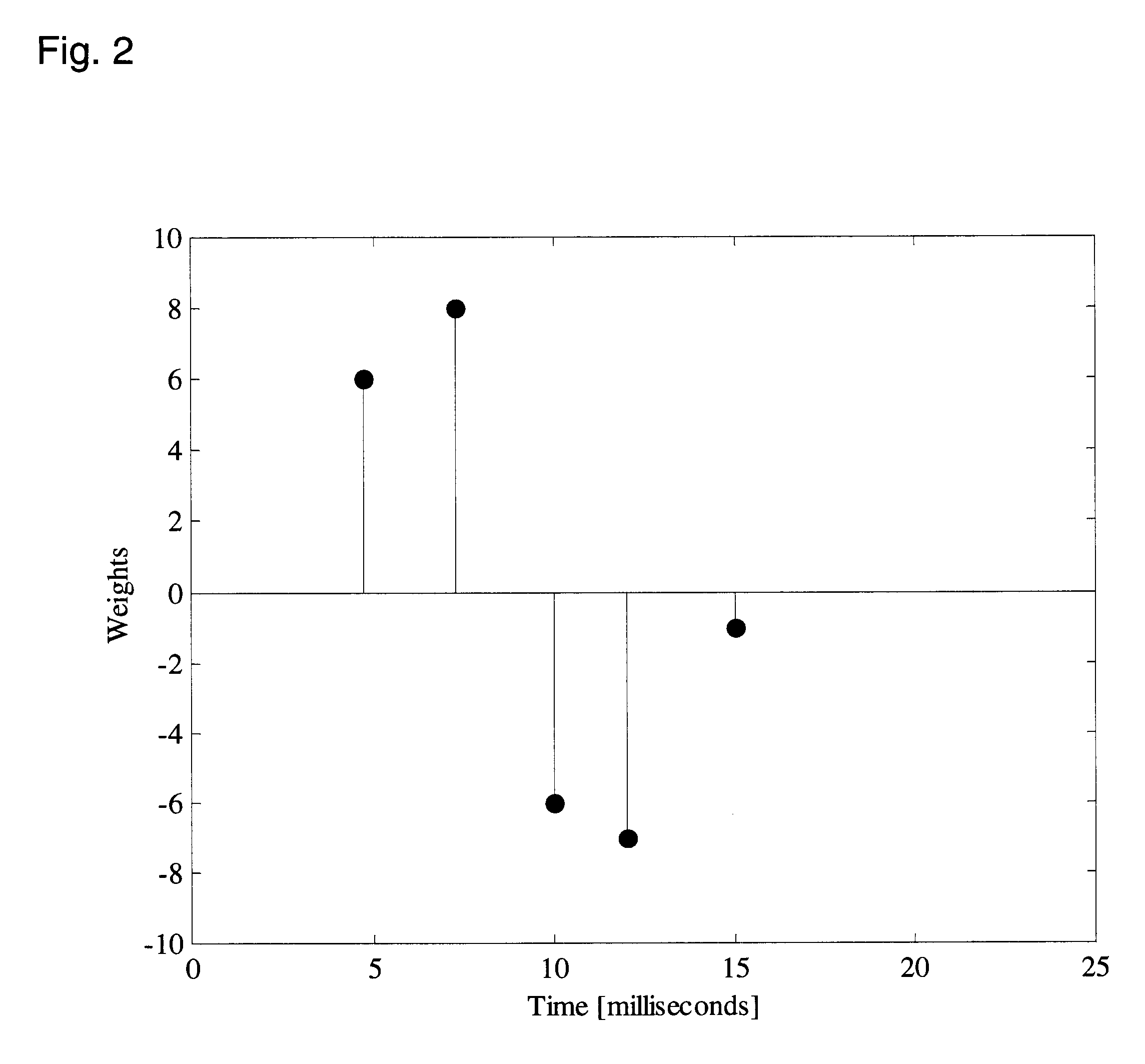Hearing evaluation device with noise-weighting capabilities
a technology of noise weighting and evaluation device, which is applied in the direction of bioelectric signal measurement, medical science, diagnostics, etc., can solve the problems of not providing weighting, prior art does not describe weighting the eeg response, and does not reveal or suggest the use of noise weighting, etc., to achieve the effect of preserving evaluation time and resources, and sacrificing evaluation accuracy
- Summary
- Abstract
- Description
- Claims
- Application Information
AI Technical Summary
Benefits of technology
Problems solved by technology
Method used
Image
Examples
Embodiment Construction
a. Overview
The invention disclosed herein detects, processes and analyzes the EEG response of a subject to certain sound stimuli. A click sound stimulus is repetitively applied to the subject's ear through a transducer. The click stimuli may be applied to one ear at a time (monoaurally), or to both ears simultaneously (binaurally). In a preferred embodiment, monoaural stimuli are applied at 37 Hz.
The EEG response is detected from surface electrodes. Testing may be performed to ensure that the electrodes have been properly placed, and that nothing is impeding the electrodes' ability to detect the EEG response signal. (See U.S. Patent Application entitled "Hearing Evaluation Device With Patient Connection Evaluation Capabilities").
In a preferred embodiment, the electrodes are placed on the subject in the following manner: a positive electrode is placed on the forehead, a negative electrode is placed on the nape of the neck, and a ground electrode is placed on the mastoid or shoulder (...
PUM
 Login to View More
Login to View More Abstract
Description
Claims
Application Information
 Login to View More
Login to View More - R&D
- Intellectual Property
- Life Sciences
- Materials
- Tech Scout
- Unparalleled Data Quality
- Higher Quality Content
- 60% Fewer Hallucinations
Browse by: Latest US Patents, China's latest patents, Technical Efficacy Thesaurus, Application Domain, Technology Topic, Popular Technical Reports.
© 2025 PatSnap. All rights reserved.Legal|Privacy policy|Modern Slavery Act Transparency Statement|Sitemap|About US| Contact US: help@patsnap.com



